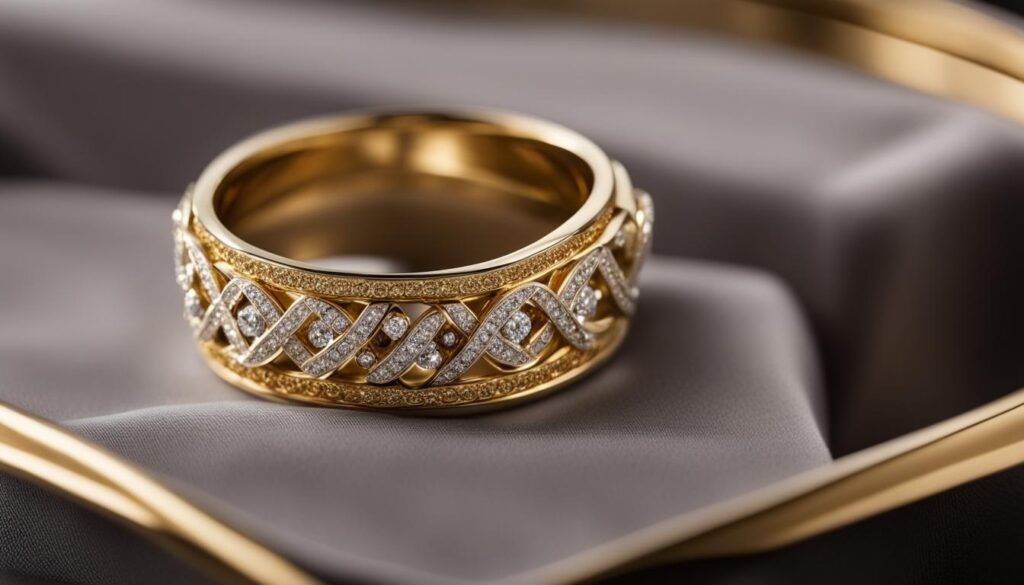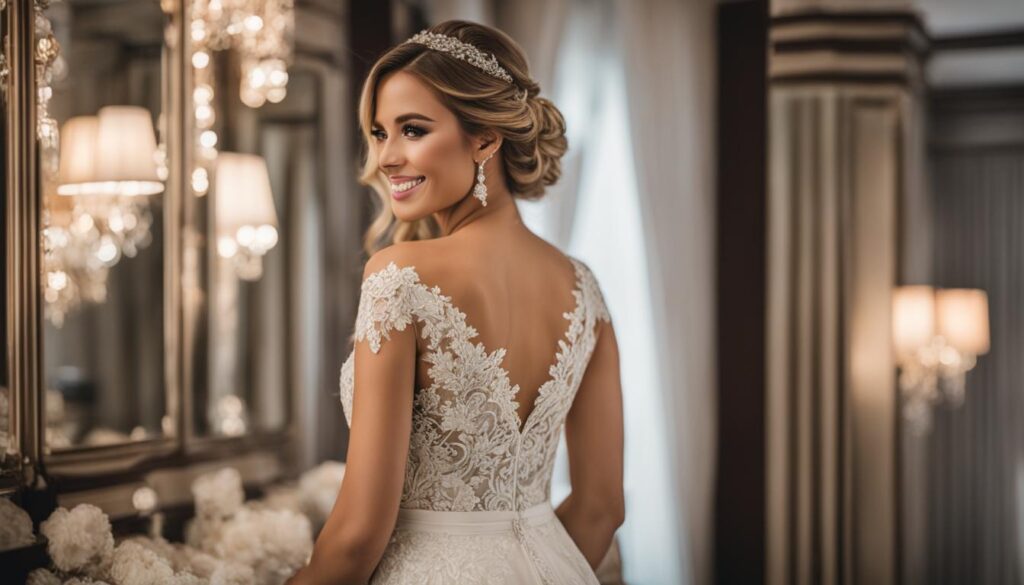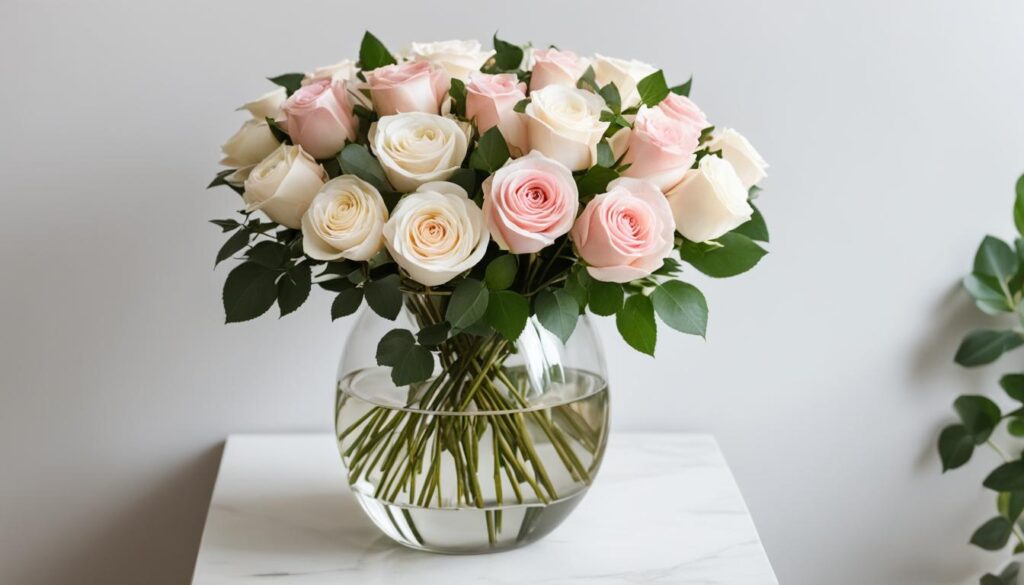We may earn money or products from the companies mentioned in this post.
Choosing the right ring can be a daunting and overwhelming task, especially with the wide range of jewelry bands available. Whether you are shopping for an engagement ring, wedding band or fashion ring, it’s essential to understand different types of rings and factors to consider before making a purchase. In this comprehensive guide on Ring Selection, we will provide expert tips and advice on how to choose the perfect ring for any occasion, covering everything from gemstone options to budget considerations. Let’s dive in!
Key Takeaways:
- Choosing the perfect ring involves considering various factors such as ring size, metal type, gemstone options, budget considerations, and personal style preferences.
- Understanding different types of rings, including engagement rings, wedding bands, and fashion rings, can help you make an informed decision.
- Choosing the right gemstone involves considering quality factors such as color, cut, clarity, and carat weight.
- Ensuring the perfect fit is crucial when selecting a ring, and it’s essential to consider comfort and suitable ring styles.
- Setting a realistic budget and finding a reputable jeweler are important steps in the ring selection process.
Types of Rings
When it comes to finding the perfect ring, it’s important to understand the different types available. From engagement rings, which are typically adorned with precious stones and given as a promise of marriage, to wedding bands, which are simple and often matched to the engagement ring, to fashion rings, which can be ornate and come in a variety of styles.
Each type of ring carries its own significance, from symbolizing love and commitment to showcasing personal style. When selecting the perfect ring, it’s essential to consider the type that best suits the occasion and aligns with your preferences.
Engagement Rings
Engagement rings are an enduring symbol of love and are often the most significant piece of jewelry a person will buy in their lifetime. They are typically adorned with a diamond or another precious stone and often feature settings that enhance the center stone’s sparkle.
When selecting an engagement ring, it’s essential to consider factors such as diamond quality, cut, carat weight, and clarity. It’s also important to think about the ring’s setting style, metal type, and overall design.
Wedding Bands
Wedding bands are often exchanged during the wedding ceremony as a symbol of the couple’s commitment to one another. They are typically simple and made of gold or another precious metal, often matching the engagement ring.
When selecting a wedding band, it’s important to consider the metal type, band width, and design, as well as how it will pair with the engagement ring.
Fashion Rings
Fashion rings come in a variety of styles and are often worn as an accessory to complement an outfit. They can be simple or ornate and feature a range of gemstones and metals.
When selecting a fashion ring, it’s important to consider your personal style and the occasion for which the ring will be worn. This will inform the metal type, stone selection, and overall design.
Cocktail Rings
Cocktail rings, also known as statement rings, are bold and eye-catching pieces of jewelry often adorned with large stones or elaborate embellishments. They are typically worn for special occasions and can be the centerpiece of an outfit.
When selecting a cocktail ring, it’s important to consider the style, color, and shape of the ring to ensure it complements your outfit and personal style.
Midi Rings
Midi rings are a trendy and fashion-forward style of ring worn on the middle section of the finger, above the knuckle. They can be simple or ornate and come in a range of metals and designs.
When selecting a midi ring, it’s important to consider the fit and style, as well as how it will pair with other rings being worn.
Factors to Consider
When selecting a ring, several factors must be considered to ensure that you make the right choice. These factors include:
- Ring size: Make sure to determine the correct ring size to ensure the ring fits comfortably on your finger.
- Metal type: Consider what metal you want the ring made from, such as gold, platinum, or silver.
- Gemstone options: Choose the perfect gemstone to add beauty and meaning to your ring, such as diamonds, sapphires, or emeralds.
- Budget considerations: Determine your budget range to find a ring that suits your needs and also fits your finances.
- Personal style preferences: Finally, decide which style of ring best represents your personal style.
By considering these essential factors, you will be able to narrow down your options and find your perfect ring. Understanding each aspect will help you make an informed decision while avoiding common mistakes.
Gemstone Selection
Gemstones are an essential element of any ring. They add beauty, color, and meaning to the piece, making it unique and personal. When selecting a gem, it’s crucial to consider several factors to make an informed decision.
Popular gemstones
| Gemstone | Description |
|---|---|
| Diamond | Diamonds are a classic choice for engagement and wedding rings, known for their toughness and sparkle. They are graded based on the 4Cs: color, cut, clarity, and carat weight. |
| Sapphire | Sapphires come in a range of colors, with blue being the most popular. They are durable and represent loyalty and truth, making them an excellent choice for an engagement ring. |
| Emerald | Emeralds are known for their vibrant green color and are the birthstone for May. They are graded based on color, clarity, and cut. |
| Ruby | Rubies are a rich red color and symbolize passion and love. They are also durable and graded based on color, clarity, and cut. |
Quality factors
When selecting a gemstone, keep in mind the four quality factors: color, cut, clarity, and carat weight. Each of these factors impacts the beauty and value of the stone.
Color
The color of a gemstone is a critical factor in determining its quality and value. For example, diamonds with less color are rarer and more valuable than those with a yellow or brown tint. The value of colored gemstones, such as rubies and sapphires, depends on their hue, saturation, and tone.
Cut
The cut of a gemstone refers to its proportions, symmetry, and polish. A well-cut gemstone will reflect light and make it sparkle. The cut also affects the stone’s overall appearance, as it can enhance or detract from its beauty.
Clarity
The clarity of a gemstone refers to the presence of inclusions or imperfections. A clearer stone is more valuable, as it allows more light to pass through and makes it appear more brilliant.
Carat weight
The carat weight of a gemstone refers to its size and weight. Larger stones are rarer and more valuable than smaller ones. However, keep in mind that carat weight alone does not determine a gemstone’s value; all four quality factors must be considered.
By considering the type and quality of gemstones, you can make an informed decision when choosing the perfect ring. Whether you opt for a classic diamond or a colorful sapphire or emerald, you can be confident that your ring will be beautiful and meaningful.
Ring Sizing and Fit
Choosing the right ring size is crucial to ensure it fits comfortably and looks great on your finger. We recommend measuring your finger in the afternoon or evening when your finger is at its largest size, as fingers can change size throughout the day due to temperature and other factors.
There are several ways to measure your ring size accurately, such as using a ring sizer tool, printable ring size chart, or measuring tape. If you’re not sure which method is best for you, visit a jeweler who can measure your finger size professionally.
It’s also important to consider the width and style of the ring when selecting a size, as wider bands typically require a slightly larger size. Additionally, comfort is key when choosing a ring, so consider a style that won’t catch on clothing or get in the way of your everyday activities.
Tip: Try on different sizes and styles before making your final decision to ensure the best fit.
Ring Budgeting
When it comes to buying a ring, setting a realistic budget is essential. It can be easy to get carried away when browsing different options, so it’s important to know what you can afford before making a final decision. Here are some tips on how to budget for the perfect ring:
- Consider your overall finances and what you can comfortably afford without putting a strain on your finances.
- Think about the occasion and the significance of the ring when determining your budget. Some events may call for a more expensive ring, while others may not require as much spending.
- Explore different options and compare prices to see what works best for you. Keep in mind that prices can vary based on factors such as metal type, diamond or gemstone size and quality, engraving, and design complexity.
Once you have a general idea of what you can afford, it’s important to stick to your budget. Don’t be afraid to ask questions and negotiate prices if necessary. A reputable jeweler will work with you to find a ring that meets your needs and budget.
Remember, finding the perfect ring is all about balance. You want a ring that looks great, but also fits within your budget. By following these budgeting tips, you can find a ring that not only makes you happy but also keeps your wallet intact.
Choosing a Reputable Jeweler
When it comes to selecting a ring, choosing a reputable jeweler is of utmost importance. Not only will this ensure the quality and authenticity of your ring, but it will also provide you with peace of mind, knowing that you are making a wise investment.
So how do you find a trustworthy jeweler? One of the first things you can do is research their reputation. Look for jeweler reviews and ratings, and ask for recommendations from friends or family who have recently purchased jewelry. You can also check for certifications, such as the Gemological Institute of America (GIA), which indicates that the jeweler is knowledgeable and trustworthy.
Another important aspect to consider is the jeweler’s after-sales support. Do they offer warranties or repair services? A good jeweler will have a robust after-sales program to ensure that customers can enjoy their rings for years to come.
Ultimately, purchasing from a reputable jeweler will provide you with a high-quality ring that you can cherish for a lifetime. So take the time to research and find the perfect jeweler for your ring selection needs.
Conclusion:
Choosing the perfect ring can be a daunting task. With so many options available, it can be challenging to know where to begin. However, with our comprehensive guide, you are now equipped with the knowledge and tools to make an informed decision on how to choose the best ring.
By understanding the different types of rings, including engagement rings, wedding bands, and fashion rings, you can narrow down your choices. Additionally, factors such as ring size, metal type, gemstone options, budget considerations, and personal style preferences can help you find the perfect ring.
When it comes to gemstone selection, we have provided guidance on quality factors such as color, cut, clarity, and carat weight. We have also discussed the importance of ensuring the right fit, measuring ring size accurately, and choosing a suitable ring style that feels and looks great on your finger.
Furthermore, setting a realistic budget is essential in the ring selection process. Our guide has provided insights on how to determine your budget, pricing factors, and different options available to find the perfect ring within your desired price range.
Finally, choosing a reputable jeweler is crucial to ensure the quality and authenticity of your ring. By researching their reputation, certifications, and customer reviews, you can find a trustworthy jeweler and benefit from warranties and after-sales support.
With this ring buying guide, you now have all the necessary information to find the perfect ring. Whether it’s for an engagement, wedding, or just because, our guide has provided valuable insights on how to choose the best ring. Happy shopping!
Affiliate Disclosure: This post may contain affiliate links. If you purchase through our link, we may receive a small commission, but at no additional cost to you. For more information, please see our Disclosure statement.



